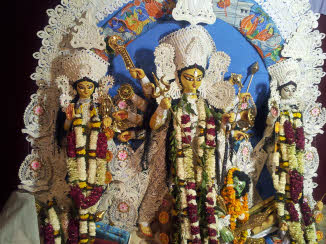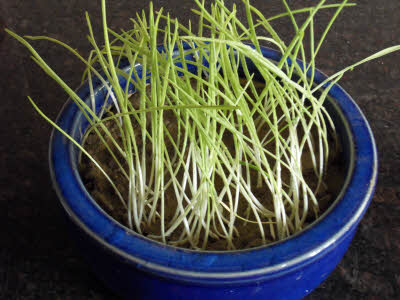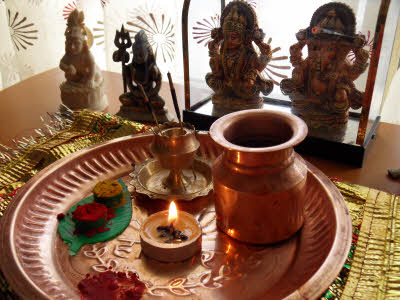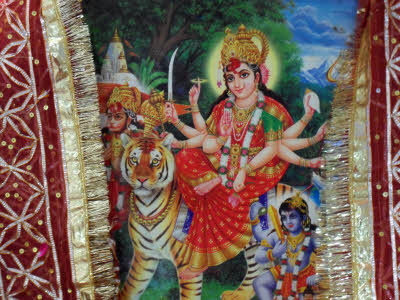Navratri
Written By: Ruchi
-
Apr•
19•13
|
Navratri is a Sanskrit word which is made of two words – Nav and Ratri. Nav means nine and Ratri means night. During these nine nights and ten days, the eight different forms of powers are worshiped. Navratri occurs twice in a year – at the beginning of the spring and at the beginning of the autumn. The spring Navratri is known as Vasant Navratri and the autumn Navratri is known as Sharad Navratri.
|
 |
How is it celebrated
Both the Navratris are celebrated in a similar fashion except that Sharad Navratri has an additional custom of sowing the barley seeds. On the first day of Sharad Navratri, barley is sowed in a pot and the pot is kept in the kitchen, fully covered for the fast growth of the barley. Every day the head of the family waters the barley lightly after taking bath and before eating anything except on the eighth day, when it’s not watered. Sharad Navratri ends with Dushehara on the tenth day, which signifies the good winning over the evil. Vasant Navratri ends with Ram Navmi on the ninth day, which is the birthday of Lord Rama.
|
 |
|
Traditionally the lady of the family fasts on all eight days of Navratri. Men of the house may fast too if they want. The fast is always kept in even numbers. The fast is a simple one. One can eat things made of kutu (buck wheat) flour, ramdana, potatoes, green chillies, sea salt, fruits and milk products. None of the spices can be used in preparing the food for the fast.
|
|
On the ninth day, seven stacks of couple of puris each, halwa and chane are prepared and offered to the Goddess Durga. Incense sticks are burnt and an earthen lamp is lit. Each member of the family offers two cloves to the lamp and does Tilak to all the Gods and Goddesses in the Pooja place. Seven young girls are invited and offered this food. They are also given a small gift (generally some money). All the members of the family eat after the girls have eaten.
|

|

|
Philosophy
There are eight basic powers of the soul, which are depicted via the eight arms of Goddess Shakti (see the picture below). Individually the eight powers are depicted in the form of 8 Goddesses, namely Parvati, Durga, Jagdumba, Santosi Maa, Gayatri Devi, Sarasvati, Kali and Lakshmi. All these symbols/Goddesses were created by the illustrators in Dwapar Yug so that it’s easy to relate to a power just by looking at a symbol. The idea was that on every day of Navratri, people will remember a Goddess and try to inculcate the power she represents.
|
|
The purpose of fasting is to eat light, which generates good thoughts and cleanses the body. Also it is advised to abstain from non-vegetarian food and sex because it generates impurities in the body.
|
 |
| What each Goddess stands for
Parvati: Power to withdraw
Durga: Power to let go of vices
Jugdumba: Power to tolerate or accept
Santoshi Maa: Power of contentment
Gayatri Devi: Power to discern what is right and what is wrong
Sarasvati: Power to decide
Kali: Power to face your own weaknesses
Lakshmi: Power to cooperate
|